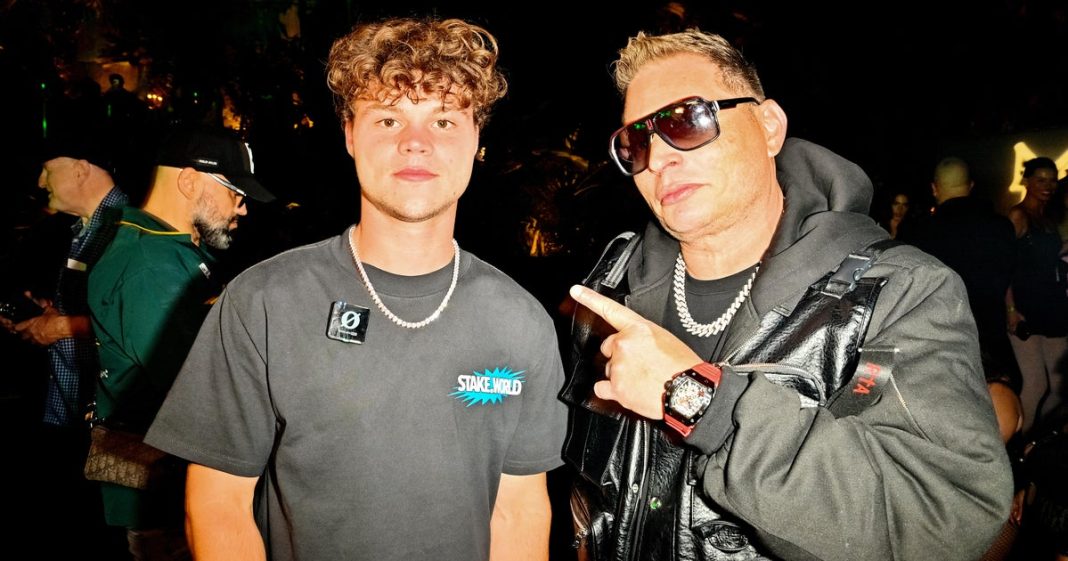The pursuit of viral fame often pushes the boundaries of common sense, good taste, and sometimes, even the law. For many content creators, the line between an engaging stunt and outright public nuisance is constantly being blurred in the race for clicks. Jack Doherty, a YouTuber known for his high-energy, often provocative content, recently found himself on the wrong side of that line, not once, but twice, culminating in an arrest that serves as a stark reminder of real-world consequences.
Blocking Traffic for Views: The Miami Beach Stunt
The incident that first caught widespread attention involved Doherty’s decision to block traffic on the iconic MacArthur Causeway in Miami Beach. His goal? To create “viral content” by orchestrating a spectacle that brought vehicles to a standstill. For those stuck in the gridlock, it was anything but entertaining. What Doherty saw as a path to more views and greater engagement, countless commuters experienced as frustrating inconvenience, a blatant disregard for public safety, and a stark display of self-centered content creation.
In the high-stakes world of social media, where attention is currency, such stunts are becoming increasingly common. Creators feel immense pressure to outdo themselves, pushing boundaries further and further to capture fleeting internet fame. The problem, as Doherty’s situation clearly illustrates, is that these digital theatrics often have very tangible, and sometimes severe, real-world ramifications that extend far beyond a trending topic on X or TikTok.
From Viral Stunt to Criminal Charges: A Rapid Descent
While the traffic-blocking incident itself was met with widespread criticism and condemnation from local authorities, the story took a more serious turn shortly thereafter. In a swift pivot from public nuisance to criminal charges, Doherty was arrested for drug possession. This development shifted the narrative from a discussion about responsible content creation to one about personal accountability and the legal system.
The details surrounding the arrest paint a sobering picture, moving beyond the antics of a YouTuber trying to go viral. It’s one thing to irk commuters; it’s another entirely to face charges that carry significant legal weight. This wasn’t merely a slap on the wrist for a public stunt gone wrong; it was a serious legal matter that highlighted a potential underlying issue far removed from the glitz and manufactured drama of social media feeds.
The Price of Going Viral: Consequences in the Real World
Doherty’s journey from a traffic-stopping stunt to drug charges underscores a critical aspect of influencer culture that often gets overlooked: the real world has rules, and consequences. The virtual realm, with its algorithms and trending topics, can create a distorted sense of reality, where immediate gratification and constant attention override responsibility. However, when these online actions spill into the offline world, the legal system doesn’t differentiate between content creation and criminal activity.
This incident serves as a cautionary tale, not just for Doherty, but for the entire ecosystem of content creators and their audiences. “It’s a stark reminder,” said a local community advocate, “that chasing internet fame doesn’t exempt you from common decency or the law. The real world has real consequences, and often, those consequences are far more permanent than any viral video.” The pressure to perform and the allure of going viral are powerful, but they are no excuse for endangering the public or breaking the law.
Ultimately, Jack Doherty’s predicament is a potent example of how the pursuit of online notoriety, when unchecked by ethical considerations or legal boundaries, can rapidly unravel into serious real-world trouble. It’s a call for greater accountability, not just from influencers themselves, but also from the platforms that host their content, and the audience that consumes it.




